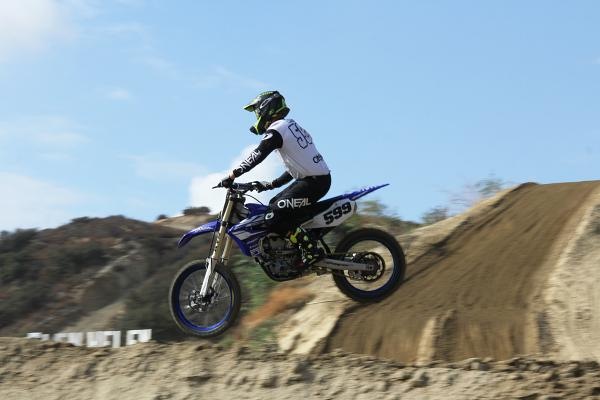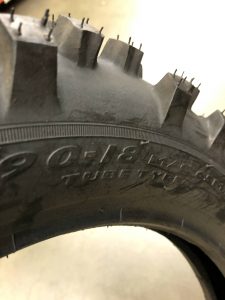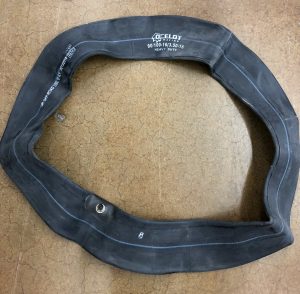Tubed Versus Tubeless Motorcycle Tires: History, Design And Style

There are several distinct advantages and applications of both tubed and tubeless motorcycle tires. Designed for rougher terrain and ease of use, a tubed motorcycle tire is traditionally used in conjunction with spoke wheels and is the OE and aftermarket tire found on pretty much all dirt bikes. Alternatively, designed for more routine driving and with an airtight seal, tubeless tires are mostly found on motorcycles intended for street use and have cast or one piece wheels. You will find some cruiser style motorcycles that have spoked wheels for that classic look and are running tube tires. That being said, each tire evolved for specific purposes, but both offer unique riding experiences. From the birth of the Hildebrand & Wolfmüller to the evolution of the bikes we drool over today, the tires are a crucial piece of design ingenuity and are worth understanding on a deeper level.
Tubed Tires and Radial Strength
Tubed tires offered several advantages to the initial motorcycle design.
- Durability and flexibility of rubber, depending on manufacturing and treatment, allowed for the ideal combination of the rugged exterior body and flexible interior tubing.
- The separate inflatable tube was ideal for the traditional, less-than-airtight spoke wheel design.
- Tubed tires are easier to replace because there is no need for special machinery or equipment.
Industrial Wheel Revolution and the Birth of the Tubeless Tire
Tubeless tires were created as technology paved the way for airtight construction. One of the first examples of the tubeless design was the 1927 Böhmerland. The sealed design of tubeless motorcycle tires allows for precision and versatility, but beyond that, it reduces overall weight, increases available profiles and runs cooler than tubed tires. Additionally, tubeless tires have a thick outer construction that may be less susceptible to complete puncture or blowout from road debris. Tubeless tires also allow for simple temporary repairs, meaning that there is less likelihood of you being stranded on a highway trying to change a tire.
Differences in the Valve Stem Design
While there are several distinct differences to tire design, the most obvious difference is in the valve stem design. The valve stem is the part of the tire that contains the air valve which allows you to add or remove air from the tire to adjust the air pressure. On a tubed tire, the valve stem is part of the inner tube, and it is typically fed through a small hole in the rim of your wheel, allowing easy access. On a tubeless tire, the valve stem is mounted to the rim with an airtight seal on the underside, but it is actually separate piece from the tire and rim.
Safety and Use Comparison
When considering the safety of tire construction, it is necessary to understand the intended use. For instance, if you are interested in offroading, then tubed tires and spoked wheel design are your best option. Tubed tires are easier to change, and spoked wheel design provides radial strength that is ideal for offroad sports and exploring. The force of impact of a rock or hard edge while offroading with spoked wheels is distributed across the spokes and helps the rim keep its shape and integrity, unlike a cast or one piece wheel where the force is directed solely on the point of impact which can possibly result in cracks or structural damage.
If you are interested in routine riding and city commuting, then tubeless tires are best. Tubeless tires offer more stability in instances of fast action and they provide a safety advantage with the thicker construction, which provides some puncture resistance.
Tire Versatility and Interchangeability
It's understandable that some people may want to have the advantages of a tubeless tire on their older model spoke wheel bike or vice versa. While it may be possible, it is not advisable. First off, the advantages will not transfer equally to a makeshift design, meaning that a tubed tire on a tubeless designed rim will not hold the same load rating or speed rating because of the extra heat transfer. Additionally, a tubeless tire on a tubed type rim will be nearly impossible to set up because of the inability to produce a durable and sustainable airtight seal. If you want a specific tire, it is best to purchase a motorcycle designed for that style of tire.
Which Tire is Best for Your Bike
The main reason to use tubed tires is for offroad performance or for looks on a retro styled motorcycle with spoked wheels. The advantages of spoked wheel design on rough and rugged terrain creates a continued need for tubed tires. However, on more expensive models, riders can get the advantage of tubeless tires with the spoke wheel look because on these larger adventure-touring bikes the spokes are attached to the edge of the rim rather than the center.
The main reason to use tubeless tires is the overall safety and functionality of the design. Tubeless tires can often handle punctures better with the tire forming a slight seal around the intruding object and therefore allowing air to escape slowly rather quickly. Additionally, tubeless tires and single cast rim construction are the favored manufacturing method of most commercial motorcycles today.
Whichever tire design or motorcycle you chose to ride, Chaparral has everything you need. From dirt bikes to cruisers, Chapmoto.com has a wide selection of tires for your specific needs. Visit us today and discover all we have to offer.




